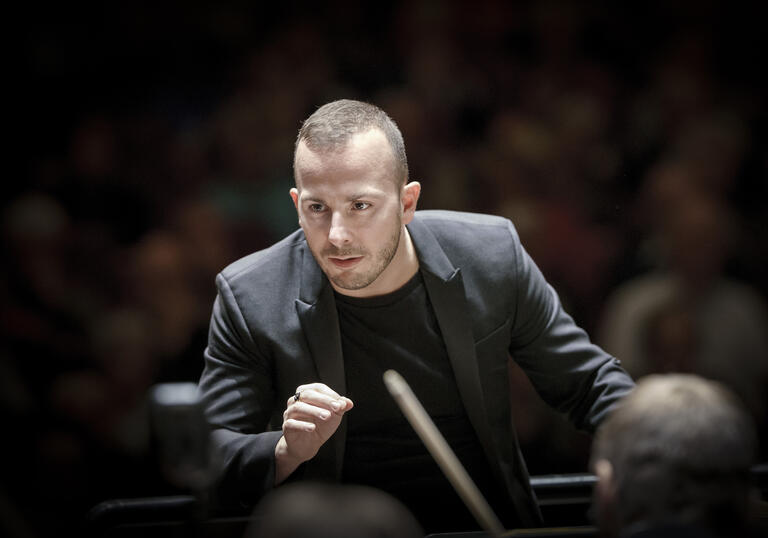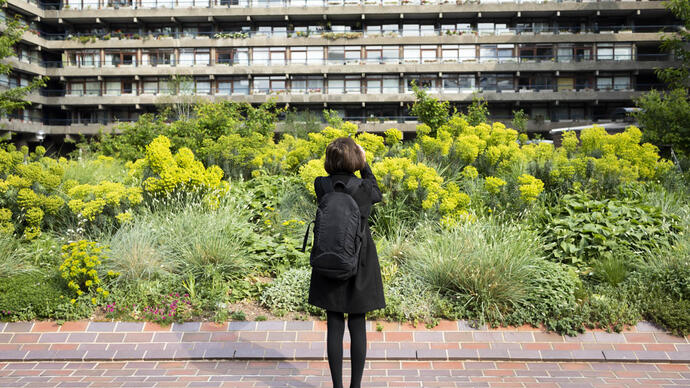
Programme and performers
Pyotr Ilyich Tchaikovsky Fantasy-Overture Romeo and Juliet
Matthew Aucoin Heath (King Lear Sketches)
Hector Berlioz ‘Chers Tyriens’ from Les Troyens
‘Chasse royale et orage’ from Les Troyens
‘Adieu, fière cité’ from Les Troyens
Giuseppe Verdi Act 4 from Otello
The Met Orchestra
Yannick Nézet-Séguin conductor
Joyce DiDonato mezzo-soprano
Angel Blue soprano (Desdemona)
Russell Thomas tenor (Otello)
Deborah Nansteel mezzo-soprano (Emilia)
Errin Duane Brooks tenor (Cassio)
Michael Chioldi baritone (Jago)
Richard Bernstein bass (Lodovico)
Adam Lau bass (Montano)
Translations
‘Chers Tyriens’
Dido
Chers Tyriens, tant de nobles travaux
Ont enivre mon coeur d’un orgueil legitime!
Mais ne vous lassez pas, suivez la voix
sublime
Du dieu qui vous appelle a des efforts
nouveaux!
Donnez encore un exemple a la terre;
Grands dans la paix, devenez, dans
la guerre,
Un peuple de heros!
Le farouche Iarbas veut m’imposer la chaine
D’un hymen odieux!
Son insolence est vaine;
Le soin de ma defense est a vous, comme aux
dieux!
Chers Tyriens, tant de nobles travaux
Ont enivre mon coeur d’un orgueil legitime!
Soyex heureux et fiers! Suivez la voix sublime
Du dieu qui vous appelle a des efforts
nouveaux!
‘Adieu, fière cité’
Adieu, fiere cité, qu’un genereux effort
Si promptement eleva florissante!
Ma tendre soeur qui me suivis, errante;
Adieu, mon peuple, adieu!
Adieu, rivage venere,
Toi qui jadis m’accueillis suppliante;
Adieu, beau ciel d’Afrique, astres que
j’admirais
Aux nuits d’ivresse et d’extase infinie;
Je ne vous verrai plus, ma carriere est finie.
Libretto by Hector Berlioz, after Virgil’s Aeneid
‘Dear Tyrians’
Dido
Dear Tyrians, your noble and unstinting toil
Has filled my heart with justifiable pride!
But do not relax your efforts, follow the
sovereign voice
Of the god who calls you to fresh
endeavours!
Give one more example to the earth:
Great in peace, become in war
A nation of heroes!
The sullen Iarbas seeks to impose on me the
yoke
Of a hateful marriage!
His arrogance is vain.
My defence is in your hands and the gods’.
Dear Tyrians, your noble and unstinting toil
Has filled my heart with justifiable pride!
Be happy and proud! Follow the sovereign
voice
Of the god who calls you to fresh
endeavours!
‘Farewell, Proud City’
Farewell, proud city, raised
By selfless toil so swiftly to prosperity!
My gentle sister, who shared my wanderings;
Farewell, my people, farewell!
Farewell, blessed shore,
Which welcomed me when I begged for refuge;
Farewell, fair skies of Africa, stars I gazed on
in wonder
On those nights of boundless ecstasy and rapture;
I shall see you no more, my career is ended.
Artist biographies
The Met Orchestra is regarded as one of the world’s finest orchestras. From the time of the company’s inception in 1883, the ensemble has worked with leading conductors in both opera and concert performances, and has acquired enormous technical polish, style, and versatility.
The Met Orchestra maintains a demanding schedule of performances and rehearsals during its 33-week New York season, when the company performs as many as seven times a week in repertoire that this season encompassed 23 operas. In addition to its opera schedule, the orchestra has a distinguished history of concert performances. Arturo Toscanini made his American debut as a symphonic conductor with the Met Orchestra in 1913, and the impressive list of instrumental soloists who appeared with the orchestra includes Leopold Godowsky, Sergei Rachmaninov, Arthur Rubinstein, Pablo Casals, Josef Hofmann, Ferruccio Busoni, Jascha Heifetz, Moriz Rosenthal, and Fritz Kreisler. In recent years, instrumentl and vocal soloists have included Itzhak Perlman, Maxim Vengerov, Alfred Brendel, Maurizio Pollini, Evgeny Kissin, Christian Tetzlaff, Renée Fleming, Susan Graham, Natalie Dessay, Diana Damrau, Christine Goerke, Joyce DiDonato, Matthew Polenzani,and Peter Mattei.
The orchestra has also performed six world premieres: Milton Babbitt’s Piano Concerto No 2 (1998), William Bolcom’s Symphony No 7 (2002), Hsueh-Yung Shen’s Legend (2002), Charles Wuorinen’s Theologoumenon (2007) and Time Regained (2009) and John Harbison’s Closer to My Own Life (2011).
The Metropolitan Opera Orchestra’s European Tour is generously sponsored by The Metropolitan Opera’s International Council, Cindy Bagby, and Mr. and Mrs John French III.
Additional support is provided by Thomastik-Infeld, Official Strings Provider of the Metropolitan Opera.

Our Patrons and supporters
Find out about our Patrons, who help us keep our programme accessible to everyone and allow us to continue investing in the artists and communities we work with.
Love the arts? Become a Patron to engage more closely with our programme.

Who we are
Meet our management team, our Board and the Trustees of our charitable arm, Barbican Centre Trust.
